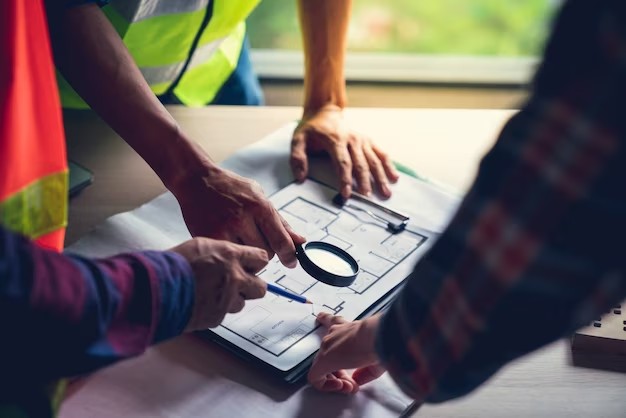Significance of NDT To Prevent In-Service Damage
- January 18, 2024
- Posted by: Velosi Author
- Categories: Civil, Insights

In-Service Damage as a part of the Non-Destructive testing system refers to the critical aspects of ensuring the safety of various structural components.
It keeps an eye on the wear and tear that structural monuments go through in their operational life. Read this blog to find out the causes of In-service damages and how they can be detected.
A Closer Look Towards In-Service Damage:
In-service damage is a general term used for a structural project that is aging and getting worse with time. It means that its condition is getting worse and there is a big probability that this structure will be demolished anytime in the future.
There are multiple reasons which may lead to the In-service damage to a specific structural monument such as operational stresses, bad environmental conditions, and even man-made disasters. Due to this, it must be prevented at all costs.
Common Causes of In-Service Damage:
Rust Issues:
Rust is the biggest threat to structural sites such as pipelines, bridges, and even off-shore platforms. With a toxic combination of harsh chemicals, moisture, and other conditions, rust eats up the composition of such structural sites and leads to in-service damages that can get worse with time and destroy sites.
Sudden Impacts:
Sudden impacts that may occur due to operational defaults and activities can lead to quick and hard in-service damages. As they completely tear down the protective layers and initiate a chain of events leading to structural issues.
Material Fatigue:
You might have seen that the constant loading and unloading of materials through a specific machinery can lead to its destruction. Thus, ruining its power and quality. This same happens for structural sites when you don’t care for the materials used in such sites, it may lead to cracks and structural weaknesses which may lead to structural demolishing in no time.
Use of Abrasion Materials:
Such materials are also referred to as hard, bittern, and harsh materials that are mainly used for rubbing and grinding tough surfaces, therefore, upon friction due to human and natural effects, such materials can easily damage the internal structural integrity of the site.
Challenging Identification of In-Service Damages
In-service damages are quite difficult to identify due to their internal structural effects. Unlike dents and scratches, such damages include internal cracks, tears, and wear down of the compositional materials that are not even visible.
This is the biggest threat that engineers face while restoring an old building and finding it is affected by the In-service damages.
Role of Non-Destructive Testing (NDT) in In-Service Damage Assessment
In general, the NDT service ensures proper assessment of the damaged extent in the structural sites without leading to any further harm in the projected sites. Inspectors can employ advanced techniques, such as sound waves, radiographic, and magnetic testing to detect any concealed defects, such as fissures or flaws, that may compromise the safety of a building or structure.
Measures & Maintenance:
Understanding the importance of In-Service damages helps industries to create the best strategies and plans to tackle such effects which may ruin their structural sites. Including regular inspection of all sites using Non-destructive techniques helps discover all potential threats before they get worse.
Moreover, enabling protective layers and organizing timely replacements for damaged materials also ensures the safety of the structures. This ultimately reduces the downtime of such structures, extends their end life cycle, and limits by enhancing their durability and reliability.
How NDT Saves Costs on In-Service Damages?
The economic effect of in-service damages greatly neglects the budget of the industries. Immediate and unexpected downtowns, emergency repairs, and tackling potential hazards lead to quick and significant financial losses for the building industries.
By using carefully made NDT services, building companies can make smart decisions about their assets, which can help prevent expensive emergencies and make their operations more efficient. Such NDT methods are increasing every day as technology continues to rule the world.
Talking about innovations such as drone-based inspections, automated robotic systems, and advanced sensor technologies quickly and precisely detect the In-service damages with proofs. Such inspections are made on accurate data. Thus, it can easily minimize the need for manual interaction in hazardous environments to save precious lives and structural compositional costs.
Please contact us for more information and assistance.



